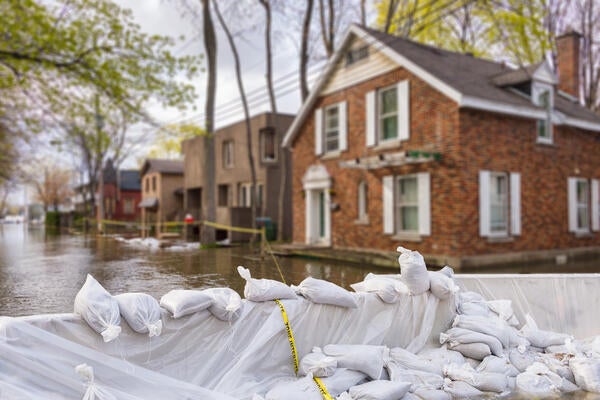
Experts address gaps in proposed flood insurance program
Waterloo Climate Institute researchers find gaps in flood insurance program proposed by the federal government

Waterloo Climate Institute researchers find gaps in flood insurance program proposed by the federal government
By Media RelationsA pair of University of Waterloo flood disaster experts have published an analysis on the federal government’s national flood insurance program that finds the proposed plan can do more to make insurance abundant and affordable for Canadian taxpayers.
Canadians are facing more uncertain insurance options as the impacts from extreme weather events due to climate change such as floods or wildfires continue to rise. Meanwhile, Quebec-based Desjardin Group announced last month it will no longer offer new mortgages or flood insurance in high-risk zones across the province.
The federal government aimed to address these challenges in its Budget 2024 last month with $15 million pledged to the Canada Mortgage and Housing Corporation to implement a national flood insurance program (FIP) by 2025. Waterloo professors Jason Thistlethwaite and Daniel Henstra analyzed the FIP and provided several policy recommendations to address the gaps in insurance provision to Canadian homeowners living in high-risk zones while protecting the interests of taxpayers.

Waterloo professors Daniel Henstra (left) and Jason Thistlethwaite
“In recent years, Canada and the world has seen extreme weather, specifically flooding, increase in frequency and severity and is causing a crisis in the insurance industry,” Thistlethwaite said.
“Canadians are losing property value due to these insurance cancelations, and few have focused on potential solutions that government and industry can provide to these stranded households.”
The Canadian government’s new property insurance market aims to improve the availability and affordability of coverage for households in high-risk flood areas. The proposed program will insure properties deemed too risky for private coverage and will subsidize premiums for low-income households.

Example of transparent flood risk disclosure
“Despite these benefits, the federal government is facing considerable political pressure to cut public spending. The imperative to contain costs, coupled with climate change and other factors that are driving up insurance costs, presents a significant challenge for the design of the FIP,” said Thistlethwaite.
“If taxpayers are going to shoulder the burden for the insurance industry, I want to get a good deal that includes increased investment in risk reduction, banning development in high-risk areas, and innovation that leads to cheap and abundant insurance.”
Some recommendations from the brief include:
“Flood risk disclosure as a whole needs to be more transparent and accessible to homeowners and potential buyers,” said Henstra. “The recommendations and key findings indicate that the new FIP falls short of providing adequate protection for Canadians in high-risk zones.”
The policy brief “Maximizing the public value of Canada’s new flood insurance program (FIP)” was released by the Waterloo Climate Institute on May 13, 2024 and is available here.

Read more
Researchers awarded funding to investigate ecology, climate change, repatriation, health and well-being through cultural and historical lens

Read more
Twenty-six researchers receive federal funding to drive discovery, innovation and research infrastructure development

Read more
Waterloo researchers propose solution to help communities escape the costly cycle of flood damage and rebuilding
The University of Waterloo acknowledges that much of our work takes place on the traditional territory of the Neutral, Anishinaabeg, and Haudenosaunee peoples. Our main campus is situated on the Haldimand Tract, the land granted to the Six Nations that includes six miles on each side of the Grand River. Our active work toward reconciliation takes place across our campuses through research, learning, teaching, and community building, and is co-ordinated within the Office of Indigenous Relations.